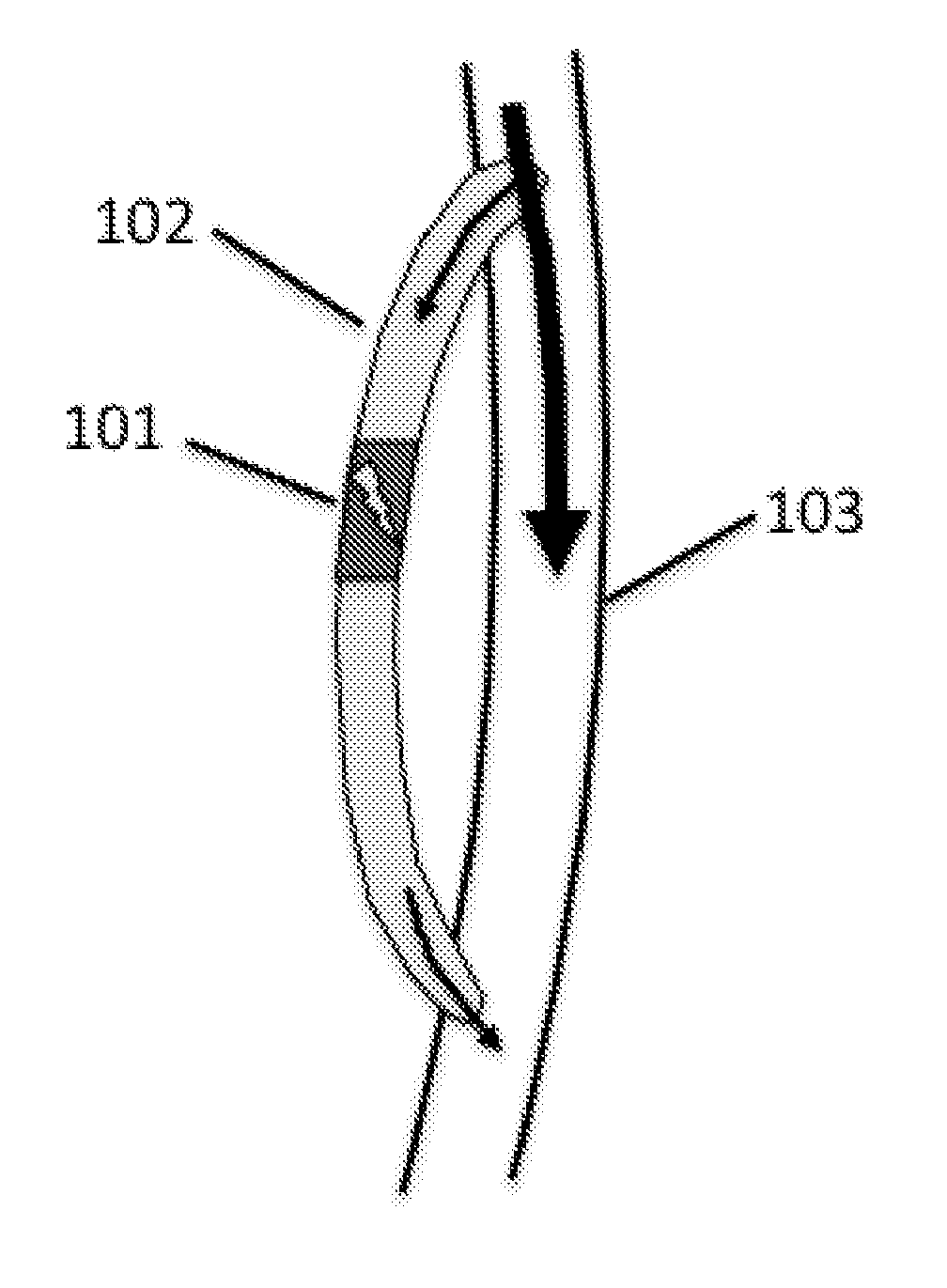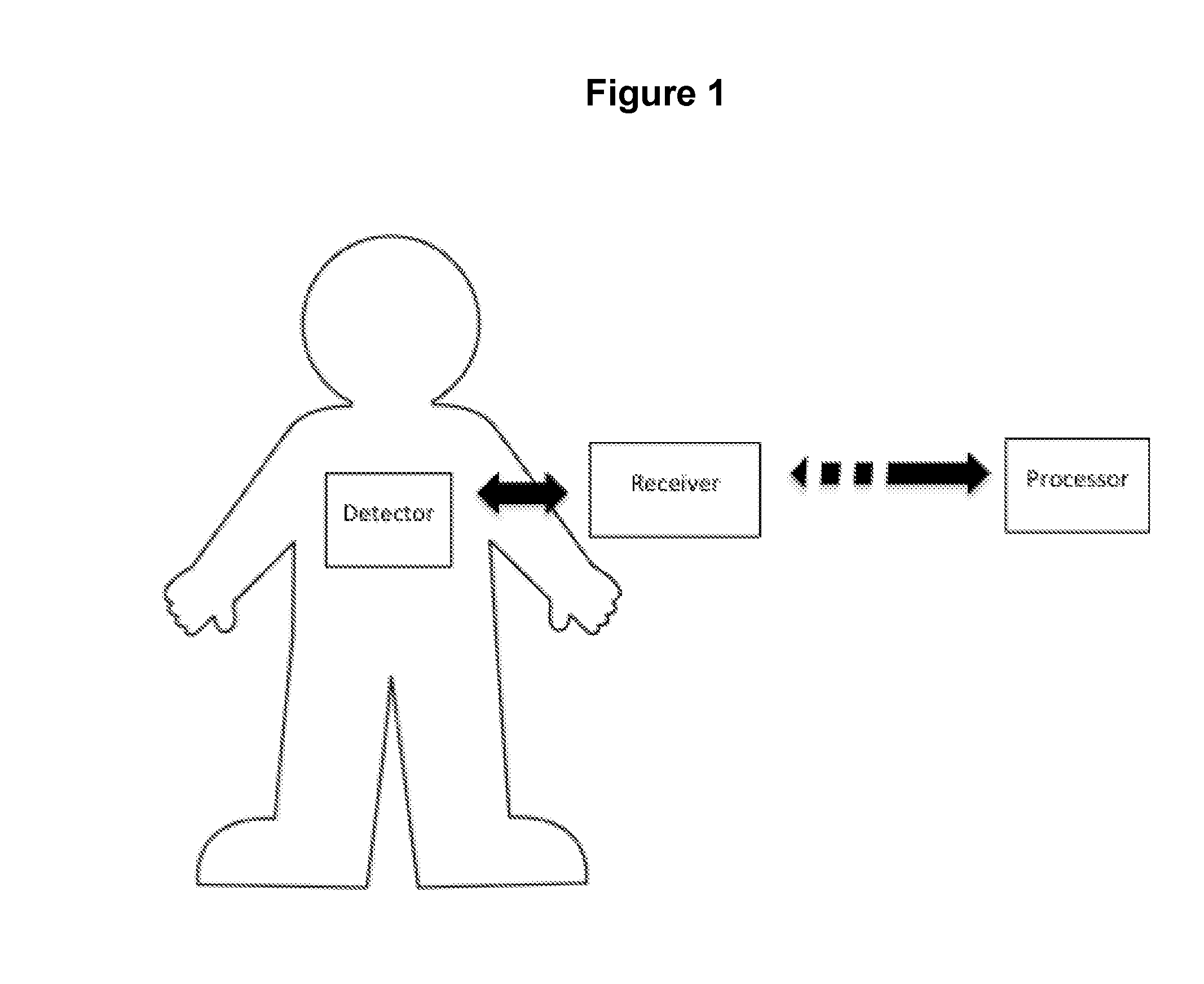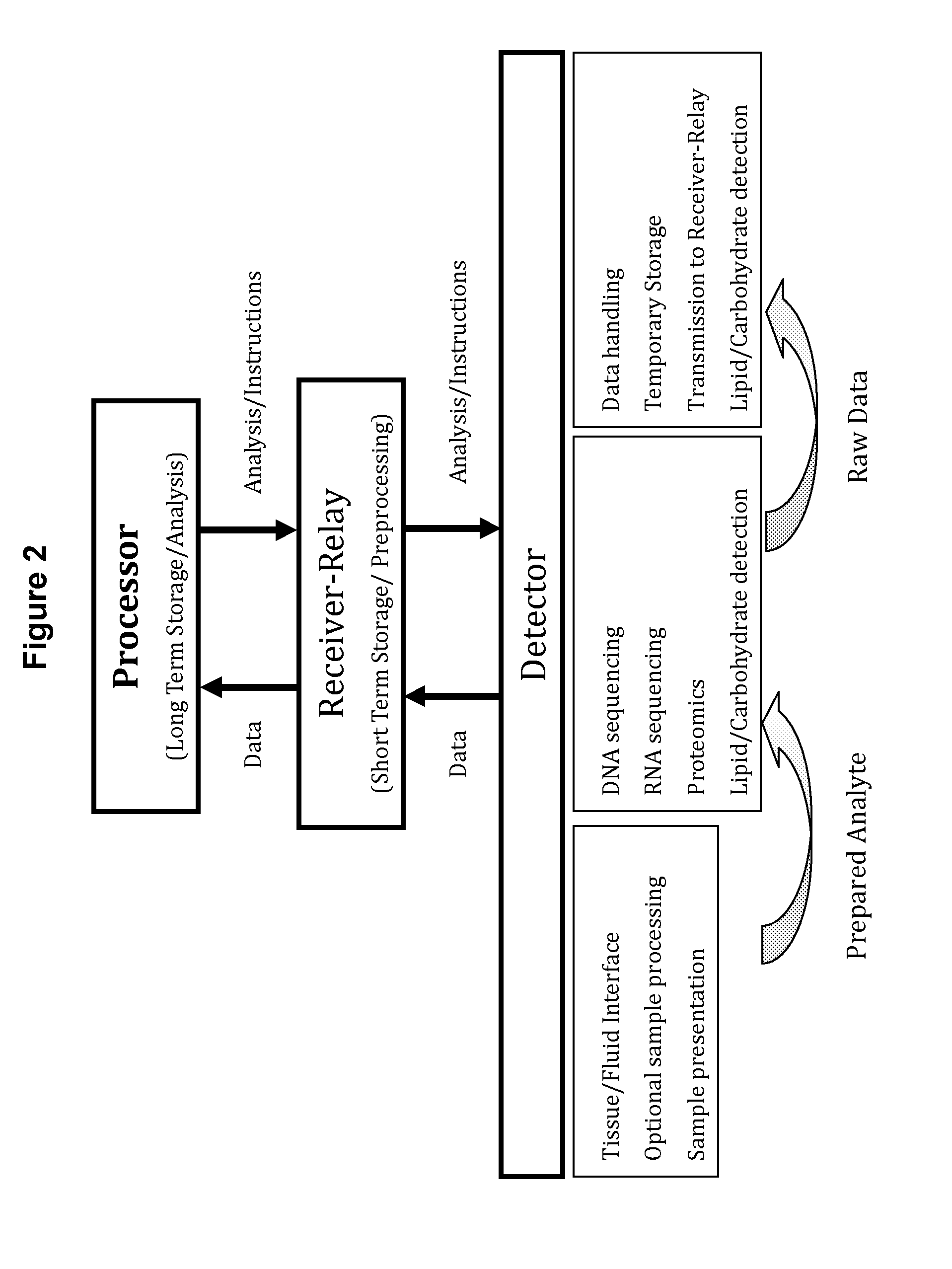Systems and methods for early disease detection and real-time disease monitoring
a disease detection and real-time technology, applied in the field of biomolecule detection systems of medical devices, can solve the problems of lack of patient education, obstacles to regular testing, and less effective therapies
- Summary
- Abstract
- Description
- Claims
- Application Information
AI Technical Summary
Benefits of technology
Problems solved by technology
Method used
Image
Examples
example 1
Perpetual Monitoring of Tumor Transcripts with Implanted Detector Array
[0209]A detection device is implanted in communication with the circulation of an individual such that blood flow passes through a nanopore array within the detection device. The nanopore array is configured for single strand sequencing of DNA in a format similar to the MinION (Oxford Nanotechnologies), with the added features of being substantially miniaturized to be implanted into a human circulation, and containing a wireless transmitter configured to transmit sequence data to a receiver located in close proximity to the human subject in order to receive the transmitted data signals from the detector device. The implanted detector device also contains an inductive power supply similar to those found in cardiac pacemakers all hermetically sealed except for the nanopore array which is permitted access to the circulation.
[0210]Circulating DNA in the human subject is detected via the nanopore array detector and tu...
example 2
Detection of Melanoma with an on-Board Detector Array
[0214]A portable detector is worn on an individual and sweat from the individual is monitored for the presence of melanoma markers S-100B and / or melanoma-inhibiting activity (MIA).
[0215]Protein sequencing data from the detector is transmitted wirelessly to a receiver in the individual's smart phone located in close proximity. The receiver relays the data files wirelessly or via cable to a processor for analysis.
[0216]The processor analyzes the sequence information using multiple comparisons and algorithms to the sequence information compared to normal human subject controls where no cancer is present. If a significant difference in S-100B or MIA exists compared to normal, healthy, non-cancer individuals, an alert will be transmitted to both the individual and their healthcare provider so that they may take immediate action.
example 3
Perpetual Monitoring of Metastatic Breast Cancer with Implanted Detector Array
[0217]A detection device is implanted in communication with the circulation of an individual such that blood flow passes through a nanopore array within the detection device. The nanopore array is configured for single strand sequencing of DNA in a format similar to the MinION (Oxford Nanotechnologies), with the added features of being substantially miniaturized to be implanted into a human circulation, and containing a wireless transmitter configured to transmit sequence data to a receiver located in close proximity to the human subject in order to receive the transmitted data signals from the detector device. The implanted detector device also contains an inductive power supply similar to those found in cardiac pacemakers all hermetically sealed except for the nanopore array which is permitted access to the circulation.
[0218]Circulating DNA in the human subject is detected via the nanopore array detector...
PUM
 Login to View More
Login to View More Abstract
Description
Claims
Application Information
 Login to View More
Login to View More - R&D
- Intellectual Property
- Life Sciences
- Materials
- Tech Scout
- Unparalleled Data Quality
- Higher Quality Content
- 60% Fewer Hallucinations
Browse by: Latest US Patents, China's latest patents, Technical Efficacy Thesaurus, Application Domain, Technology Topic, Popular Technical Reports.
© 2025 PatSnap. All rights reserved.Legal|Privacy policy|Modern Slavery Act Transparency Statement|Sitemap|About US| Contact US: help@patsnap.com



